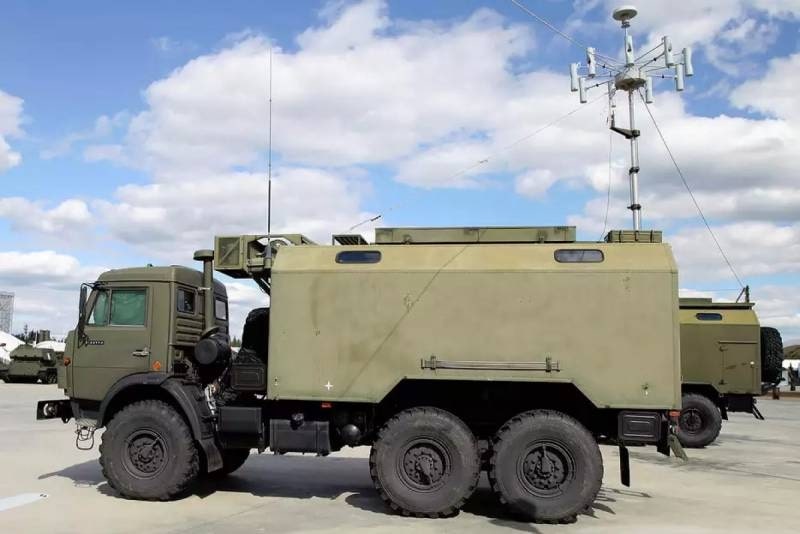Russia claims to have brought down a Ukrainian Tupolev Tu-141 Strizh (Swift) unmanned aerial vehicle on Sunday by disabling it only with Electronic Warfare (EW) systems. The drone was jammed mid-air and crashed in a village in the Tula region.
Russia’s Ministry of Defense has particularly publicized the employment of the Pole-21 EW system, which presumably knocked out the Tu-141 electronics, controls, and navigation, eventually bringing it down.
Tu-141s, a Soviet-era high-speed reconnaissance drone, have been previously used by Ukraine to strike deep inside Russia. They hit Russia’s Engels and Dyagilevo air bases last year on December 5 and 26.
“Three people received fragmentation wounds, and three apartment blocks and four household structures were damaged,” TASS quoted from the MoD statement.
Blast Still Used From The Past
However, all Tu-141 strikes have been unsuccessful following the December attacks, particularly the February 28 attempt to hit an oil depot at Tuapse in the Krasnodar region. Pictures of the wreckage and debris by local residents that claimed to be of the drone went around on social media.
It is unclear how this drone was brought down, but claims on Russian Telegram groups said that the UAV malfunctioned on its own. This, however, could not be verified.
Before that, another Strizh crashed on February 6 in Russia’s Kaluga Oblast, by when Russian scientists had concluded that engineers from American defense firm Raytheon had helped Ukraine to modify the drone with new navigation systems.
An article on Zvezda, a publication of the Russian Ministry of Defense (RuMoD), said that Ukrainian engineers from Ukroboronprom could not have modified the drones without access to the original drawings and design blueprints.
It “would not have happened” without “American engineers from Raytheon Technologies who modified the old Soviet Tu-141 with new on-board navigation,” the article added.
Tu-141 was produced at the Kharkiv aircraft plant in 1979 and used until 1989, two years before the Soviet Union disintegrated. A total of 152 units were produced, some of which went to Ukraine, which incorporated it into the 321st Separate UAV Squadron based in Odesa.
With a maximum speed of 1,110 kilometers an hour, a top service ceiling of 19,685 feet (6,000 meters), and a range of up to 1,000 kilometers, the drone was quite revolutionary at that time.

Latest Attack
According to the statement from the RuMoD, the Armed Forces of Ukraine (AFU) attempted to use the UAV in a “shock performance.” “The Pole-21 electronic warfare system (disabled) the navigation system (of the) Ukrainian strike UAV (and) the drone crashed in the Kireevsk area,” the statement said.
Additional information from the RuMoD said there was also a “group of anti-aircraft defense systems in the Tula region (which consisted of the) S-300, Pantsir-S1 to ensure reliable protection.” Kireevsk is 600 kilometers north of the Ukrainian border and around 250 km south of Moscow.
After the “disoriented” UAV crashed in Kireevsk, specialists from the RuMoD were working at the site. Russia can be expected to try and find possible evidence of US technical assistance and raise the issue at the diplomatic level.
It had long pointed to unofficial North Atlantic Treaty Organization (NATO) and US assistance to Ukraine with on-ground military personnel, private volunteers and mercenaries, specialists, and targeting and reconnaissance data from spy drones like the RQ-4B Global Hawk. The last was for the maritime USVs at Sevastopol.
As the MoD specifies that the EW system took down the drone, it can be assumed that Russian units did not want to fall for a possible Ukrainian trick of identifying where Russian missile-based Air Defense (AD) radars are, according to one assessment on a Russian Telegram group.
The Tu-141s were first used as direct long-range cruise missiles in the December strikes, which was a vastly different role than the high-speed reconnaissance that the Soviets intended.
Interestingly, Ukrainians had claimed to have destroyed a Pole-21 with a Leleka drone, according to one report last week, in the Kherson region. An AFU unit called the Lesniki (Foresters) undertook the strike on March 13, which also involved “precision artillery fire.”
Latest in Formidable Russian EW
The Pole-21 interferes with and suppresses any signals from navigation satellites within a range of 25 km. Russians use P-340 Pole-21 electronic warfare systems to suppress satellite communications. According to Army Recognition, it entered service with the Russian Armed Forces in 2016.
A TASS report from November 2019, when the system first reached troops of the Central Military District (CMD), said the Pole-21 is intended to protect strategically important facilities from cruise missiles, drones, and guided air bombs.
It “suppresses equipment connected to global satellite and radio-navigation systems. The latest station’s equipment allows setting up as many as 100 radio interference posts.”
The platform is part of an array of formidable Russian EW systems, beginning with the Krasukha-3, LEER-4, and Tirada-2S, that have admittedly put Russia at the top of countries with these capabilities.
- The author can be reached at satamp@gmail.com
- Follow EurAsian Times on Google News